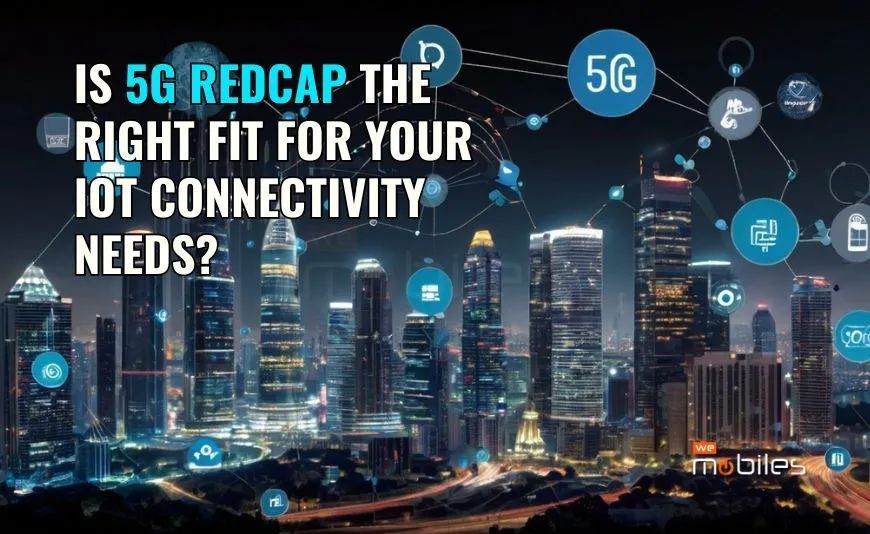Should you consider 5G RedCap for your IoT connectivity?

Nexville, July 10th N I A M E X VILLE As humanity moves towards the future at a fast pace with smart cities and devices being an integral part of our lives now, the demand for IoT Connectivity has never seen more significant growth. Finally arrives 5G RedCap (Reduced Capability), a likely candidate for whole new standard of an already proven technology, modified in order to realize the most critical properties required from edge devices. 5G RedCap: does it suit your IoT connectivity needs? Let's explore.
Understanding 5G RedCap
This is 5G RedCap: a simpler side of the new, next-generation network that's designed specifically for IoT devices and only needs bits-and-pieces (or perhaps more accurately "bytes-and-morsels") of information -- rather than using every tool in Ma Bell' Byzantine toolbox. Designed to provide a mix of reduced complexity, lower-cost and improved battery life while also improving network efficiency across the entire IoT spectrum, 5G RedCap seems like it will fit that bill.
Key Advantages
Simplicity and Cost: 5G RedCap devices use fewer antennas, reducing complexity as well as overall cost of device manufacturing.
Longer Battery Life: Designed with power efficiency in mind, 5G RedCap helps prolong the lifespan of battery-operated IoT devices.
Higher Efficiency of the Network: 5G RedCap reduces network congestion and improving efficiency overall, allowing larger IoT deployments to be managed more easily.
Scalability: With its capability to support a very large number of devices, 5G RedCap is well-suited for smart cities up through industrial automation applications.
Potential Use Cases
5G RedCap-based networks can be used as on-demand virtual-private LTE® networks for a wide range of smart city applications such real-time traffic management,smart grid synchronization and public safety systems.
Industrial IoT at Scale: Remote monitoring, predictive maintenance and asset tracking enabled by a 5G RedCap.
Healthcare: RPM (remote patient monitoring) and telemedicine applications, can transmit continuous data reliably to work streams such as 5G or RedCap.
Consumer Electronics: 5G RedCap boosts performance and battery life in applications ranging from smart home devices to wearables.
Its iBeacons vs Other IoT Solutions
So far, so 4G LTE support on the NB-IoT and some relative cheap solution of LTE-M access - this is nothing new as fa s long term IoT connectivity.A low-power cellular device can bit many applications but trends will be driven by future. So its higher data rates, hence performance compared to NB-IoT and LTE-M allows for better scalability in case of large-scale deployments. This makes it an appealing choice for IoT networks in the future.
Challenges and Considerations
Deploying 5G RedCap has several challenges such as upgrading infrastructure, covering area of the network and security maintenance. However, with the gains from 5G RedCap it still is an option for many IoT use-cases.
Conclusion
5G RedCap is a huge leap forward in terms of IoT connectivity options, giving us the right balance between performance and cost. With industries and cities build their expansion in IoT networks, 5G RedCap is expected to become a key player defining the future of connectivity. If you're hoping to maximize your IoT deployments, please do consider RedCap with 5G.
Stay updated and gain insights about how 5G RedCap can boost your IoT Connectivity by subscribing to our latest updates.
Post a Comment
You must be logged in to post comments

0 Comments